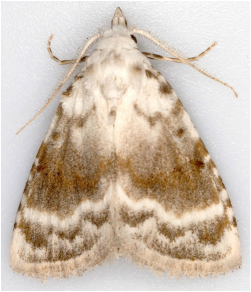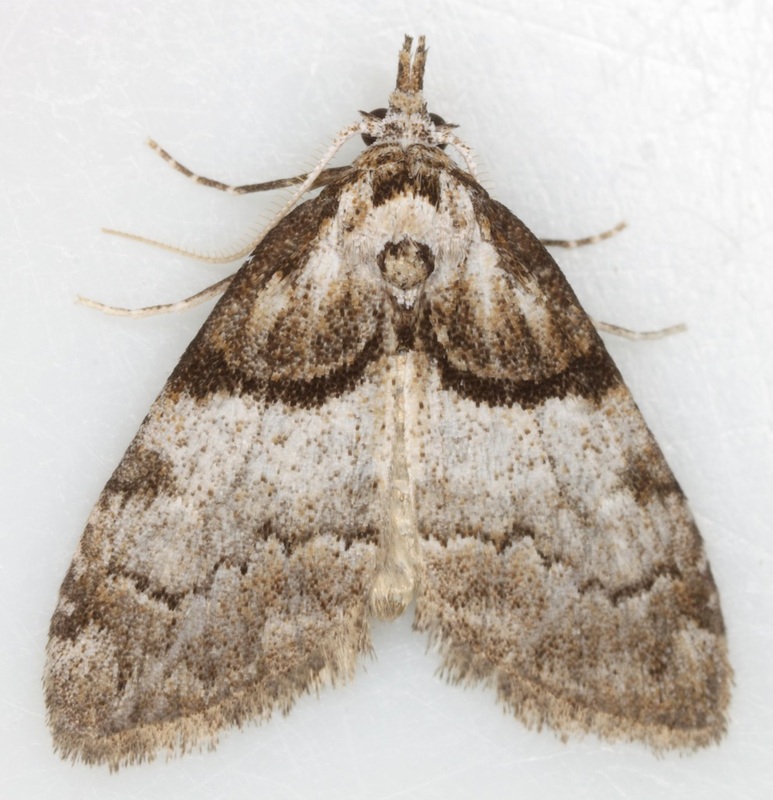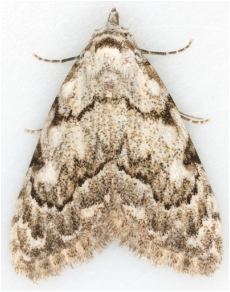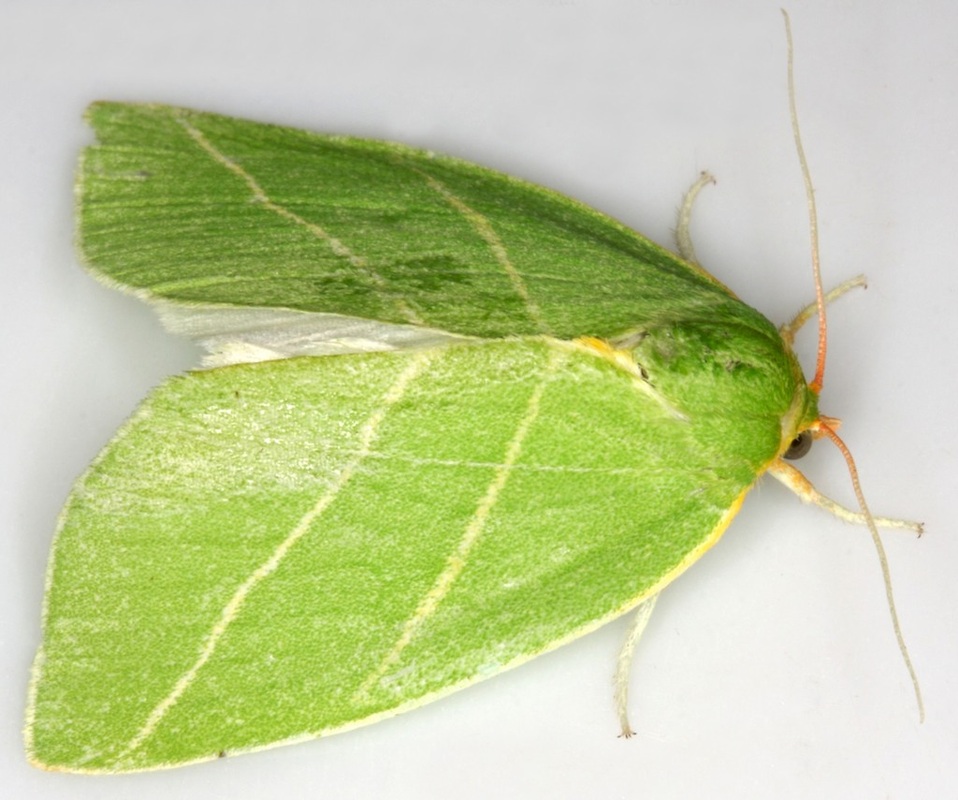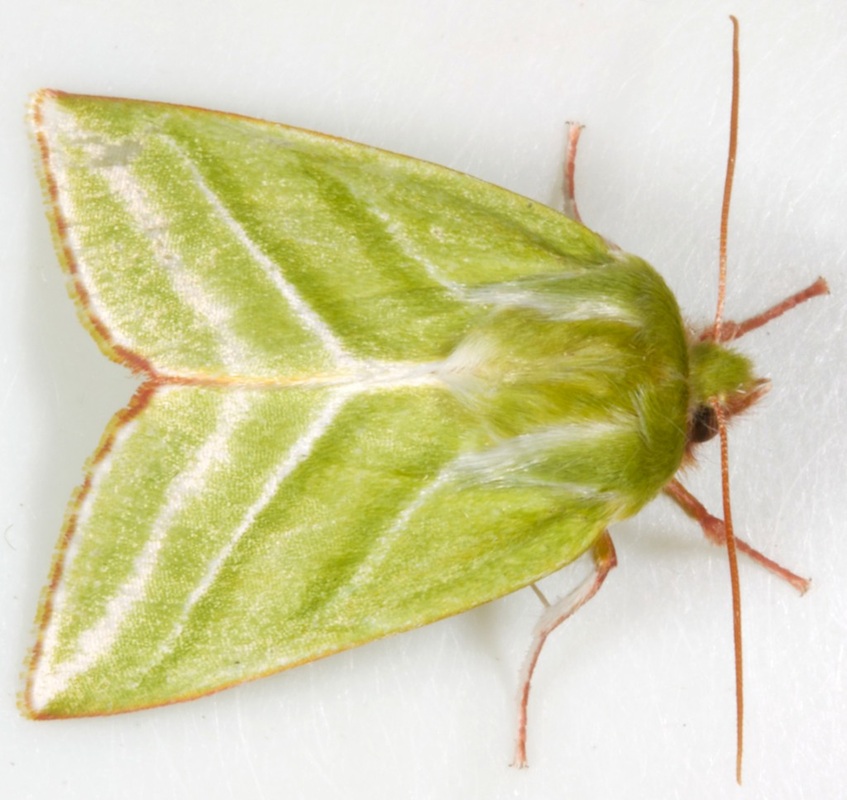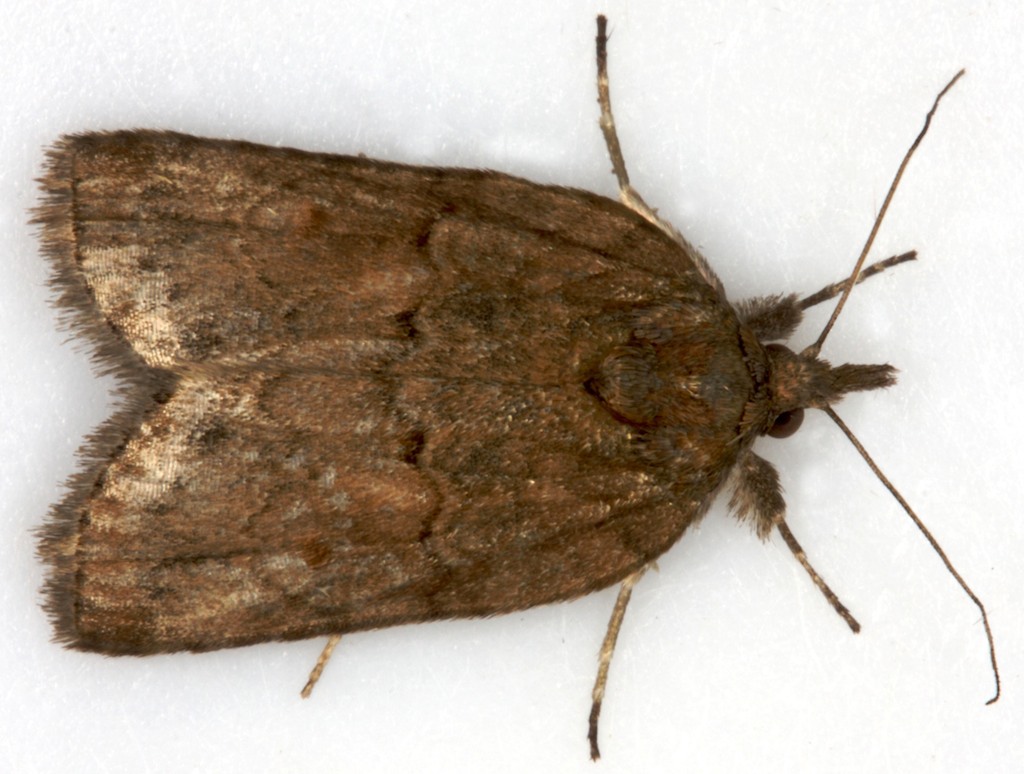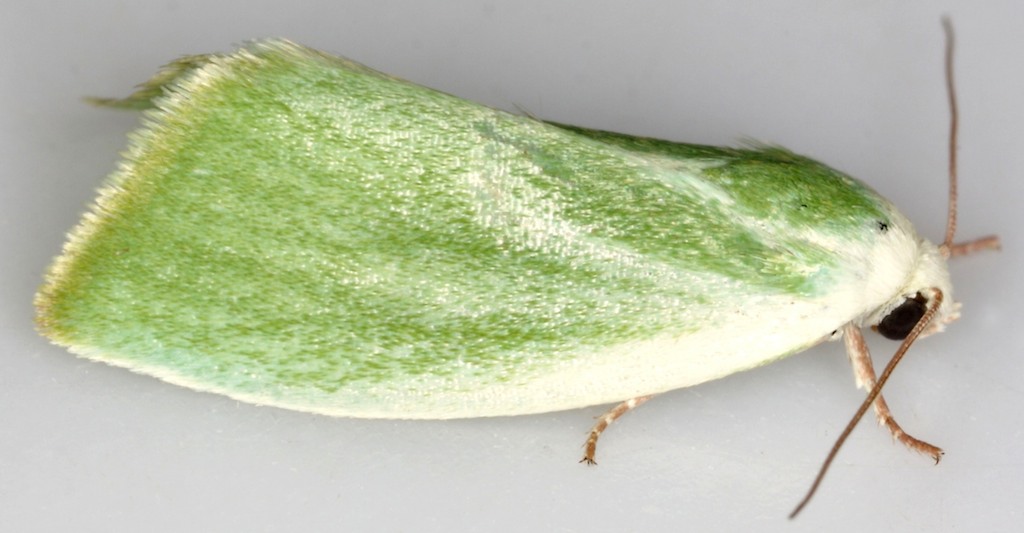Family 74: NOLIDAE (2SF 6G 12S+3 [1CI]) |
Suborder:Glossata Infraorder:Heteroneura Superfamily:Noctuoidea
References: Waring & Townsend, MBGBI10
References: Waring & Townsend, MBGBI10
Subfamily: Nolinae (2G 5S +1CI)
All British representatives of this subfamily are in Tribe: Nolini. Subfamily: Nolinae contains 6 species on the RES British list, 2 in genus Meganola and 4 in genus Nola. One of these, Nola chlamitulalis (Jersey Black Arches), has only occurred in the Channel Islands and only on one occasion. N.cucllatella (Short-cloaked Moth) is the most distinctive due to its sharply demarcated darker basal area. N.confusalis (Least Black Arches) has a distinct curved black postmedian line and the proximal half of the forewing is noticeably whiter than the distal half. N.aerugula (Scarce Black Arches) has a slightly wavy but almost straight black postmedian line which is variable in intensity. M.strigula (Small Black Arches) is most similar to N.confusalis but its postmedian line is broken into dots, the proximal part of the forewing is not noticeably paler than the distal half and it usually has short black streaks along the veins in the subterminal area. M.albula (Kent Black Arches) lacks any distinct black cross-lines but usually has a diffuse brown postmedian fascia.
All British representatives of this subfamily are in Tribe: Nolini. Subfamily: Nolinae contains 6 species on the RES British list, 2 in genus Meganola and 4 in genus Nola. One of these, Nola chlamitulalis (Jersey Black Arches), has only occurred in the Channel Islands and only on one occasion. N.cucllatella (Short-cloaked Moth) is the most distinctive due to its sharply demarcated darker basal area. N.confusalis (Least Black Arches) has a distinct curved black postmedian line and the proximal half of the forewing is noticeably whiter than the distal half. N.aerugula (Scarce Black Arches) has a slightly wavy but almost straight black postmedian line which is variable in intensity. M.strigula (Small Black Arches) is most similar to N.confusalis but its postmedian line is broken into dots, the proximal part of the forewing is not noticeably paler than the distal half and it usually has short black streaks along the veins in the subterminal area. M.albula (Kent Black Arches) lacks any distinct black cross-lines but usually has a diffuse brown postmedian fascia.
Meganola (2S)
Nola (3S +1CI)
|
003 Nola cucullatella (Short-cloaked Moth)
|
004 Nola confusalis (Least Black Arches)
|
005 Nola aerugula (Scarce Black Arches)
fw: 8-9mm; Jun-Aug; common bird’s-foot trefoil (Lotus corniculatus), clovers (Trifolium spp); formerly resident on sand-dunes near Deal, Kent 1858-1898, rare migrant with 131 British records since 1900 (to 2018). |
006 Nola infantula (Jersey Black Arches)
Rare migrant. Recorded in Jersey in 1963 with 2 subsequent British records (Essex and Dorset).
Nola chlamitulalis deleted from main list, placed on B list, and name changed to infantula in 7th update (Jan 2024).
I have confirmed with David Agassiz that the intention here was to remove N.chlamitulalis from the main list as it is a species that has never occurred in Britain; but to leave Jersey Black Arches, reidentified as N.infantula on the main list.
Rare migrant. Recorded in Jersey in 1963 with 2 subsequent British records (Essex and Dorset).
Nola chlamitulalis deleted from main list, placed on B list, and name changed to infantula in 7th update (Jan 2024).
I have confirmed with David Agassiz that the intention here was to remove N.chlamitulalis from the main list as it is a species that has never occurred in Britain; but to leave Jersey Black Arches, reidentified as N.infantula on the main list.
Subfamily: Chloephorinae (2T 4G 6S)
Formerly considered as a subfamily of Noctuidae.The 2 Earias species were formerly placed in their own subfamily Eariadinae in family Noctuidae. The rationale for bringing these subfamilies together and placing them in family Nolidae is unclear to me.
Formerly considered as a subfamily of Noctuidae.The 2 Earias species were formerly placed in their own subfamily Eariadinae in family Noctuidae. The rationale for bringing these subfamilies together and placing them in family Nolidae is unclear to me.
Tribe: Chloephorini (2G 2S)
Tribe: Sarrothripini (2G 4S+3)
Nycteola (2S)
Earias (2S+2)
|
011 Earias clorana
(Cream-bordered Green Pea) |
012 Earias insulana (Egyptian Bollworm)
fw: 10-12mm; Rare migrant with 9 British records (to 2018); mostly Oct |
0121 Earias biplaga (Spiny Bollworm)
ws: 18-25mm; rare migrant with 3 British records 0122 Earias vittella (Eastern Bollworm)
fw: 10-12mm; few British records, status uncertain, but not regarded as migrant by Atropos. |
